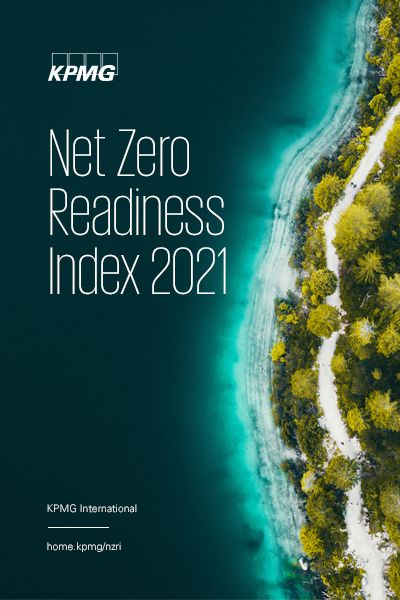The country produces oil, liquid natural gas and palm oil, uses coal in power generation and subsidizes gasoline, giving it a lot to do to reach Net Zero. But it has some strong initiatives in place including its Green Technology Financing Scheme.
Political direction
In response to the threats of global warming, Malaysia has adopted the Paris Agreement and committed to a 45 percent reduction in emissions intensity of GDP by 2030 compared to a 2005 baseline.1 As of 2019, the country was able to reduce its carbon emissions intensity rate to 33 percent2 but additional support in the form of climate finance and technology transfer could drive further decarbonization.
In September 2021, following the release of the 12th Malaysia Plan, Malaysia’s prime minister announced a carbon-neutrality target of 2050. The government will no longer build new coal-fired power plants and a comprehensive National Energy Policy will soon be introduced. Carbon pricing and carbon tax will be introduced alongside other carbon reduction measures after a review of the low-carbon development strategies by the end of 2022.
Malaysia primarily uses coal and natural gas to generate electricity. The installed capacity of coal power plants forms approximately 40 percent of the total capacity.

“Malaysia’s challenge is to decarbonize its energy-centric economy in the face of population growth pressures and poverty outside of urban areas. The transition to net carbon zero will require not just political will but also significant structural and legislative reforms on a national scale,” says Phang Oy Cheng, Executive Director of Sustainability Advisory, KPMG in Malaysia.
One of the government’s strengths is introducing the Green Technology Financing Scheme (GTFS), which is to subsidize work in sectors including renewable energy, buildings, transport and manufacturing.3 Through this scheme, the government is able to facilitate more green projects and businesses.
Policy signals
Malaysia published a national electric mobility blueprint in 2015, which aimed for 100,000 electric cars by 20204 but Phang says that implementation has been slow with low uptake of electric vehicles and little availability of electric vehicle charging infrastructure. The country also subsidizes gasoline.
The outlook on buildings is brighter, with GTFS funding and tax incentives for green development. New buildings typically meet standards for energy and water-use efficiency due to the implementation of appliance and efficiency standards, although these do not cover construction and materials. Malaysia also has some buildings that meet the World Green Building Council’s platinum standard.
Malaysia has also established the Energy Audit Conditional Grant, an energy efficiency program under the 12th Malaysia Plan, for implementation between 2021-25.5 It is supported by grants for organizations in the commercial and industrial sectors to help them collaborate with local energy service companies registered with the Energy Commission to conduct energy audits in their buildings.
Tenaga Nasional Berhad (TNB), the government-owned monopoly utility, buys renewable power from independent producers and offers customers rooftop solar panels with the option of selling excess power back to the company.6

There have been some progression towards its green agenda where TNB has stated that its Jimah East electricity generation facility, commissioned in 2019, will be its last new coal-fired power plant, as it has pledged not to invest anymore in greenfield coal-fired power plants. This is in line with the company’s transition to cleaner and more sustainable energy.7
Currently, it is observed that the main drivers of climate change action are largely by private initiatives from the business sector. In October 2020, PETRONAS, the Malaysian oil and gas group, set an aspiration to achieve Net Zero emissions by 2050, partly by making existing operations more efficient but also by developing low and zero carbon fuels and carbon capture technologies.8
Around three-quarters of Malaysia’s industrial output is from small and medium enterprises, which will typically need government guidance and regulation to decarbonize, but at present this is lacking although there is evidence of circular economy incentives. Similarly, a well-run carbon market and pricing would provide companies with a standard way to measure their progress and help them access green capital, underlining the need for these to be introduced.
From the investors’ perspective, sustainable investing is viewed as pivotal to climate change action. The country’s pension fund, the Employees Provident Fund, has announced its aim to having a fully ESG-compliant portfolio by 2030 through its sustainable investment policy and became the signatory of the UN Principles of Responsible Investment.9 With that, there is likely to be more inflow of funds towards the ESG agenda, including Net Zero.
As for the financial services sector, financial institutions are under increasing pressure by investors, regulators and other stakeholders to mitigate the possible risks arising from climate change. However, the challenge is in assessing, quantifying and managing those risks. Bank Negara Malaysia, Malaysia’s central bank, has implemented initiatives for the financial sector to address issues on climate change, which include the Climate Change and Principles-based Taxonomy (CCPT) and the Value-based Intermediation Guidelines (VBI). The CCPT aims to classify activities based on their impact on climate change and to steer financial flows towards activities that promote the transition to a lower carbon economy.10 The VBI is aimed to provide the outcomes of Islamic financing to generate positive and sustainable impact to the economy, community and environment.11
On agriculture, some palm oil plantations have used waste biomass to provide electricity for several years, although mills tend to be relatively old and could be more efficient. Palm trees are not currently recognized as a way to lock up carbon, but Phang says this could be explored.
While Malaysia scores high on forestry as a proportion of total land area, more work could be done to certify and protect these forests. According to the Plantation Industries and Commodities Ministry, Malaysia, through the Malaysian Sustainable Palm Oil, is committed to limit the total oil palm cultivated areas at 6.5 million hectares, to halt deforestation and ensure its oil remains sustainable. This means that the industry must accelerate its productivity through technology.
Contributor
Connect with us
- Find office locations kpmg.findOfficeLocations
- kpmg.emailUs
- Social media @ KPMG kpmg.socialMedia
Argentina | Australia | Brazil | Canada | Chile | China | Denmark | France | Germany | Hungary | India | Indonesia | Italy | Japan |
Mexico | New Zealand | Nigeria | Norway | Poland | Russia | Saudi Arabia | Singapore | South Africa | South Korea | Spain | Sweden | Thailand |
Turkey | United Arab Emirates | United Kingdom | United States
1 ‘Environment Ministry drawing up guidelines and policies on carbon market’, Malay Mail, 6 July 2021. https://www.malaymail.com/news/malaysia/2021/07/06/environment-ministry-drawing-up-guidelines-and-policies-on-carbon-market/1987673
2 Putrajaya to review carbon emission commitments next year. https://www.theedgemarkets.com/article/putrajaya-review-carbon-emission-commitments-next-year
3 Green Technology Financing Scheme, GreenTech Malaysia, accessed July 2021. https://www.gtfs.my/
4 ‘National electric mobility blueprint’, GreenTech Malaysia, 3 April 2015. https://rise.esmap.org/data/files/library/malaysia/RE/12.4%20page%2011.pdf
5 'RMK-12 Energy Audit Conditional Grant and Energy Management project', Malaysia Sustainable Energy Development Authority, accessed July 2021. http://www.seda.gov.my/energy-demand-management-edm/energy-audit-conditional-grant-commercial-building/
6 ‘Go solar with us now’, Tenaga Nasional Berhad, accessed July 2021. https://www.tnb.com.my/solar/
7 ‘TNB says coal-fired power plant revenue will not exceed 20% by 2030 on cleaner-energy transition’, The Edge Markets, 15 December 2020. https://www.theedgemarkets.com/article/tnb-says-coalfired-power-plant-revenue-will-not-exceed-20-2030-clearerenergy-transition
8 ‘Net zero carbon emissions’, Petronas, accessed July 2021. https://www.petronas.com/sustainability/net-zero-carbon-emissions
9 ‘Bursa Malaysia: Moving the dial on ESG adoption, The Edge Markets, 22 February 2021 https://www.theedgemarkets.com/content/advertise/bursa-malaysia-moving-the-dial-on-esg-adoption
10 ‘Bank Negara to finalise the new climate change taxonomy’, The Star, 7 October 2020. https://www.thestar.com.my/business/business-news/2020/10/07/bank-negara-to-finalise-new-climate-change-taxonomy
11 ‘Value-based Intermediation Financing and Investment Impact Assessment Framework’, Bank Negara Malaysia, accessed August 2021. https://www.bnm.gov.my/documents/20124/761679/VBIAF_Final+guidance+1.11.2019.pdf
12 ‘Malaysia committed to cap total oil palm planted areas at 6.5m hectares’, The Star, 5 January 2021. https://www.thestar.com.my/business/business-news/2021/01/05/malaysia-committed-to-cap-total-oil-palm-planted-area-at-65m-hectares



